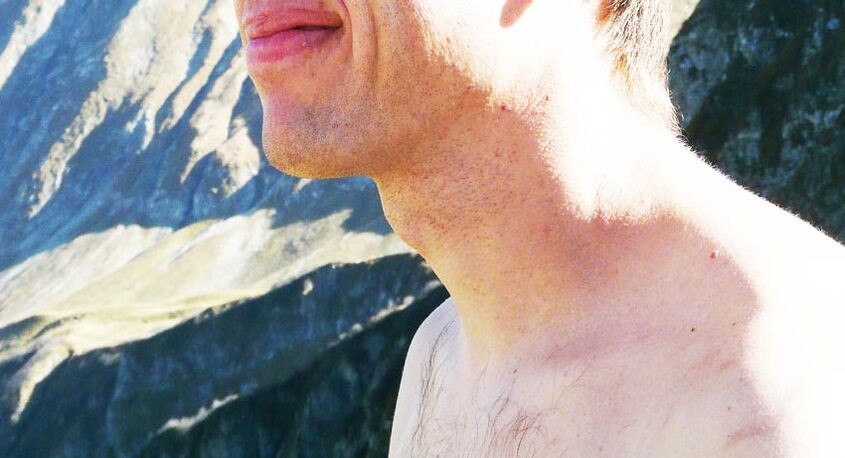
The osteochondrosis of the cervical spine is known and well studied.Currently, the bigger part of the working population is suffering from this disease.This type of osteochondrosis develops not only in the adult population, but also quite often in adolescents, the so -called juvenile osteochondrosis.
The cervical department is the most mobile part of the spine, so the load in this department is quite high.The disease develops gradually, characterized by frequent exacerbations, which can lead to a significant reduction in the quality of life of the patient.
The causes of the disease
The causes of the disease are generally several and may depend on the patient's age.We point out the most common:
- Disruption of calcium-phosphorus exchange of each etiology;
- various traumatic back injuries;
- no -balanced load on the spine (hypodynamia or vice versa the impact of increased load);
- diseases of the cardiovascular system;
- congenital malformations of the spine;
- change of stand, including scoliotic type;
- blood disorders leading to the deterioration of the force of the intervertebral disc;
- Dystrophic bone tissue disorders associated with age.
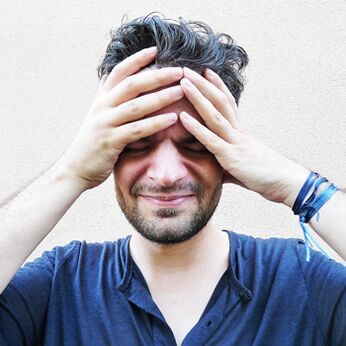
In adolescence, the main causes of the disease are trauma, not balanced physical activity (training process).In older patients, the main cause is a long common position during labor activity, disorder of hormonal origin.
Additional predisposing factors in the development of the disease may be:
- heredity;
- hypothermia;
- poor or not completely treated exacerbation of osteochondrosis;
- Stressful situations and fatigue.
Osteochondrosis develops gradually.A person who is constantly exercising may not know what is the subject of this disease.
Most of all, this condition is found in people over twenty -five years.Osteochondrosis of the cervical spine is characterized by the fact that the process develops from the upper sections.However, if you do not receive medical attention, the process can gradually affect the lower segments of the spine.
Symptoms of osteochondrosis of the cervical spine in adults and children
As the disease has been developing for years, in many cases the process is asymptomatic.Sometimes it happens by accident, according to radiological images, the initial signs of the disease can be determined while complaints will be actively absent.It must be remembered that the more adherent the patient is, the more diverse complaints he will present.
The main complaints of cervical osteochondrosis are:
- Frequent headache and dizziness;
- Tingling of the tip and weakness in the hands;
- Vegetative manifestations;
- increase in blood pressure;
- Discomfort from neck movements;
- constant pain or burning pain on the spine;
- frequent myositis of the neck muscles;
- changes in the stand;
- restrictions on head movement;
- In addition, a forced position of the head may develop;
- tinnitus;
- meteorological dependence;
- crunching in the neck when performing movements;
- Disruption of sleep.
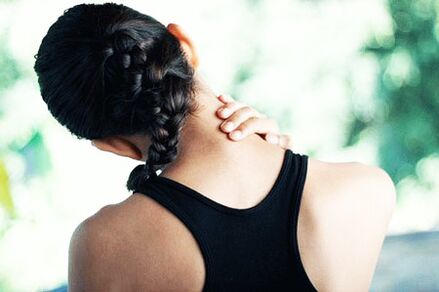
These are the most pronounced symptoms that the patient may present.Unfortunately, the process can begin to develop from young people and adolescents will present such complaints.
More often, these symptoms are manifested jointly.Osteochondrosis of the cervical spine continues with the episodes of exacerbation and remission.This is due to the effect of provoking factors on the body.We should not forget that if such a diagnosis is made, restoration therapy and rehabilitation course should be performed every six months to avoid an acute period.
Given that the main cause of the disease is reduced by the intervertebral disc and the lack of adequate therapy, the process may end in the formation of intervertebral hernia.
Complaints and clinical picture of the disease - Photo
Vascular manifestations in the form of dizziness or headache are enhanced by performing elementary motor tasks (tilting or turning the head).In the set of all complaints, the patient tries to further take a forced position to reduce the symptoms, which worsens the nutrition of the intervertebral disc.
It is these complaints that most often encourage the patient to see a doctor.If you do not do treatment, the complaints will be strengthened and will be more permanent, that is, they will not go away on their own.
Pain with cervical osteochondrosis, as a rule, permanent, sick, burning character.The disease can be accompanied by periodic "bastards", which are provoked by acute movements.
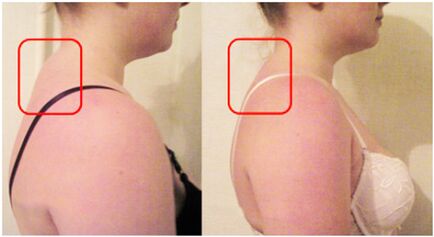
Increasing blood pressure in the background of osteochondrosis encourages the patient to be examined by the therapist.If you do not carry out timely competent treatment, the increase in blood pressure will become constant, which contributes to the development of secondary hypertension.In these situations, properly assembled history is of great importance.
When the process is localized in the cervical region, the unpleasant sensations spread along the posterior surface of the neck, the constant tension of the bone muscle system helps to limit the movements and the formation of a forced position of the head.
The pain with cervical osteochondrosis is accompanied by impaired sensitivity.Due to constant discomfort, the muscle roll is gradually formed in the shoulder, the patient is unpleasant in this area.
In addition to constant discomfort, the patient may experience acute, firing neck pain.The occurrence of such complaints suggests that the patient should give a complete rest to reduce the pain.In some cases, the pain is so intense that one cannot perform the simplest action (turn your head, take a deep air, straighten your back).In all cases, the patient should examine the doctor and confirm the diagnosis of osteochondrosis.
Changing the hormonal background also plays a significant role in the development of cervical disease.Therefore, the competent physical activity will reduce the general clinical symptoms and relieve the patient's condition.Due to the fact that neck pain is constantly worried, a secondary sleep disturbance occurs.It is difficult for a person to take a comfortable position in bed, the worries that leads to psycho-emotional stress.
In addition, the patient pays attention to sensitivity.Describe them as "goosebumps" that feel at your fingertips.In some cases, unpleasant sensations can be localized throughout the arm, muscle strength decreases.
Diagnosis
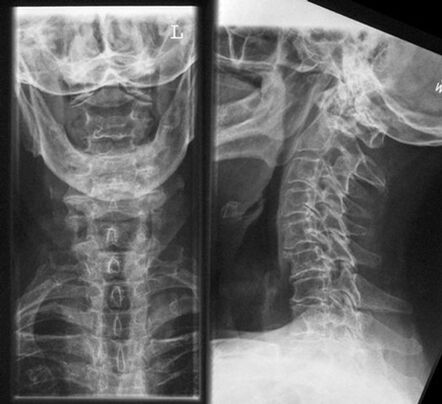
It is quite difficult to make a diagnosis based on one review.In general, the following measures are taken to clarify the diagnosis:
- in -depth collection of complaints;
- consultations of specialized specialists (cardiologist, endocrinologist, neurologist);
- X -ray examination of the cervical spine;
- Magnetic resonance imaging.
Specialized doctors' checks are needed to rule out the acute conditions of the cardiology profile and others.With the exclusion of acute somatic pathology, we can talk about the diagnosis of osteochondrosis.In addition to general clinical manifestations, the diagnosis can be confirmed with the help of X -ray examination of the spine.
X -ray is the most accessible and easy -to -continue study that helps to diagnose.In the photo you can see a narrowing of the space between the vertebrae, which shows the dystrophy of the intervertebral disc.Bone plants can be distinguished at the ends of the vertebrae.If osteochondrosis is complicated by instability in the cervical region, then the X -Rail can be noted by displacing the vertebrae relative to another.
Osteochondrosis of the cervical spine is a disease that can show radiologically which zone is most well -known.Even when examining a cervical segment, it can be seen that the process is not evenly common.
In particularly complex cases, magnetic resonance imaging is performed, which helps to diagnose the complication of osteochondrosis-internegral hernia.Thanks to the image of MRI on the layer -by -by, even the most minimal hernias and immediately show the level of damage.
Treatment of osteochondrosis of the cervical spine
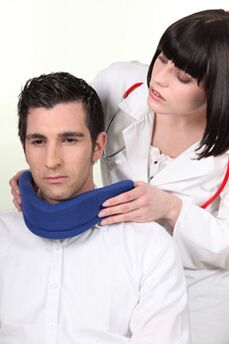
Only a doctor knows how to treat cervical osteochondrosis in an acute and inter -stroke period.The therapy that is prescribed for this condition must be complicated.When it exacerbates the disease, it includes:
- medicines;
- complex restorative therapy (physiotherapy exercises, gymnastics, massage, acupuncture, manual therapy);
- physiotherapy (electrophoresis, UHF, magnetotherapy, laser therapy);
To prevent osteochondrosis exacerbation, they resort to:
- Treatment with sanatorium-rack;
- folk medicine;
- wearing special dressings and corsets;
- Change in lifestyle (weight loss, balanced physical activity).
Medicines for the treatment of osteochondrosis of the cervical spine are as follows:
- anti -inflammatory drugs;
- drugs that improve blood circulation;
- Vitamin complexes;
- in sharp situations of analgesics;
- It means that it reduces muscle tension.
In addition to pills and injections, active creams, ointments and gels are prescribed to the affected area.In their influence, they contribute to the irritation of the skin in a particular area that improves blood circulation in small vessels, thus guaranteeing the supply of nutrients to damaged segments and muscle tension decreases.

After an acute period, physiotherapy, massage and physiotherapy are signed.Recovery therapy is a supplement to the main treatment with drugs.As the condition will improve, the power and trophic of the intervertebral disc will also be better.
Against the background of treatment, the patient will note improvement in well -being, increased performance and mood.If the treatment is stopped without completing, then exacerbations of osteochondrosis will often be passed.
The rehabilitologist will tell how to treat osteochondrosis of the cervix during the recovery period.Before talking about a complex of recovery therapy, it should be noted that any treatment should be accompanied by a correction of sleep accessories.These include orthopedic mattresses and pillows.
Experts also further recommend wearing a Chanstz collar constantly or for a period of time.This method is especially widely used in childhood practice when patients dress it for the period of homework.The chance is chosen separately in orthopedic salons.
For each patient, the orthopedic cushion for cervical osteochondrosis has been selected.It should be suitable for the size of the bed and be selected depending on the patient's constitution.It should not be very small or very large, the main direction is the width of the shoulders of the person.
Long sleep and rest pillow should be medium stiffness and resemble a square or rectangular shape.Pillows of different shapes are suitable for short rest.Depending on the activity of the degenerative process, the orthopedic cushion for cervical osteochondrosis should be changed.
Exercise and gymnastics (exercise therapy)

Recovery therapy should be due to gymnastics.The main task of exercise is to strengthen the muscles of the neck and back, the upper shoulder girdle, improve the mobility of the spine and eliminate the muscle brackets.In addition, cervical osteochondrosis exercises affect deep muscles.
As a result of gyn with cervical osteochondrosis, physiological turns are gradually recovering and the load on the intervertebral discs is reduced.We should not forget that cervical osteochondrosis exercises should also capture breast segments.
Cervical osteochondrosis gymnastics is performed with an instructor.It helps patients understand which areas to be focused.The load and the volume of tasks are selected individually and depends:
- from the patient's age;
- from the spread of the process;
- From the presence of additional concomitant diseases;
- From the effectiveness of drug therapy.
First, simple and short -made tasks are performed, as the body begins to adapt to new conditions, and the muscles perform their work in sufficient volume, the exercises are complex and the duration of the classes increases.
LFK for cervical osteochondrosis includes simple actions.These are tilting the head back and forth, gradually adding circular movements to the head.It should be borne in mind that even for medical physical education, it can be contraindications.As a rule, the complex of one lesson includes tasks that are aimed at developing and influencing all segments of the spine.
After exercise in the cervical region, they gradually add tasks to improve breast and lumbar function.Media physical education for cervical osteochondrosis can be performed in a standing or sitting position.The tasks are performed reassured, with a short pace, this will allow the respiratory gymnastics to be added.
Contraindications to physiotherapy exercises:
- Acute pain syndrome;
- increase in blood pressure and the presence of pathology of the heart in the acute phase;
- disorders of the coordination and disease of the vestibular apparatus;
- fever;
- exacerbation of another chronic pathology;
- condition after surgical treatment.
Exercise of special equipment
This technique is based on a gradual restoration of the normal activity of the bone muscle system.Gymnastic exercises that are performed on a specialized simulator allow you to gradually restore the work of the cervical structures of the spine.
First, the pain is relieved, then the blood circulation is restored, the muscle tension is removed and classes are carried out to expand the motor activity in the cervical region.The method is supported further by massage courses, classes in the pool.
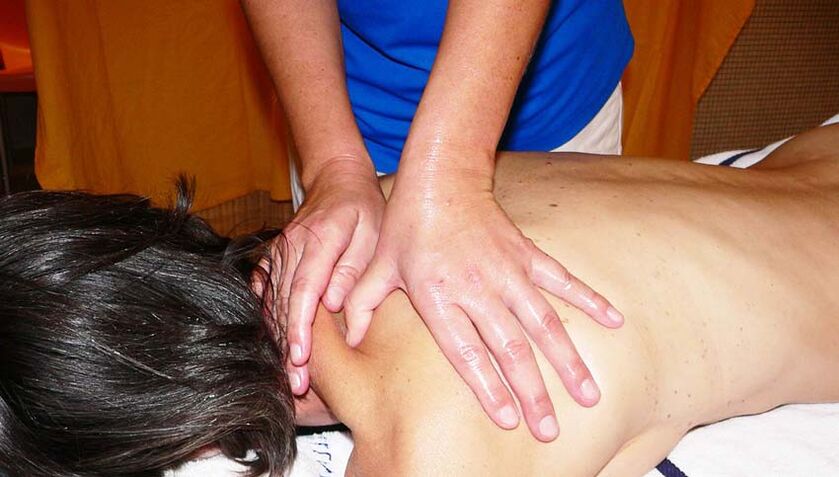
Massage for osteochondrosis of the cervical spine
In addition to the common strengthening classes, a very good effect has a massage.Cervical osteochondrosis massage can be used by different (classic, segmental, point).In some cases, a combination of different techniques in one session is allowed.
We should not forget that the massage with cervical osteochondrosis is performed on a solid surface, facing down and its duration can vary from ten sessions or more.The rate of repetition of the course is also determined by the attending physician.The effectiveness of the massage will last longer if the patient sleeps on a pillow -the burden.
Physiotherapy procedures such as magnet or electrophoresis have a local irritant effect.Magnetotherapy is a painless procedure that is well tolerated by adults and children.The manipulation lasts for several minutes, the patient should lie still, so more adult patients are most commonly recommended.
Electrophoresis is a manipulation that is performed using a special device.During the procedure, the patient experiences a slight tingling, which is created with the help of currents.The frequency and impulsiveness of the signal for any age is his own. With the help of this technique, the introduction of a medicine that has a positive effect is performed.This manipulation is more aggressive than magnetotherapy, therefore there must be strict indications for its administration.
With the help of this technique, the introduction of a medicine that has a positive effect is performed.This manipulation is more aggressive than magnetotherapy, therefore there must be strict indications for its administration.
A balanced diet is of great importance in this disease.Patients are recommended to eat fruits, vegetables, meat, greenery, fish.Consumption of salt and any spices, spices, smoked or fried products, sugar should be limited.It is better to drink vegetable decoction and teas, it is advisable to avoid the use of coffee and alcohol.
The use of traditional medicine is aimed at reducing pain.Most often, compresses and mixtures are used that overlap on the damage area.The success in the treatment of osteochondrosis of the cervical spine depends largely on the patient's mind.Do not throw the classes and therapy as soon as you feel better.It is irrational to constantly use painkillers that carry temporary relief and the disease itself is not treated.

























